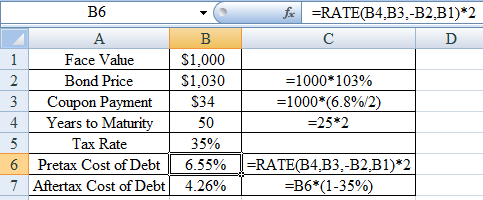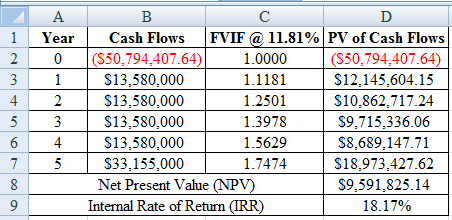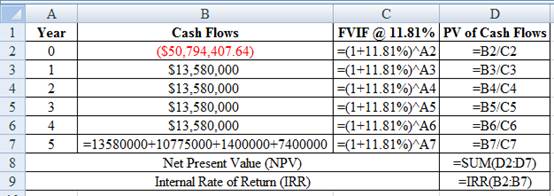
Concept explainers
Project Evaluation This is a comprehensive project evaluation problem bringing together much of what you have learned in this and previous chapters. Suppose you have been hired as a financial consultant to Defense Electronics, Inc. (DEI), a large, publicly traded firm that is the market share leader in radar detection systems (RDSs). The company is looking at setting up a manufacturing plant overseas 10 produce a new tine of RDSs. This will be a five-year project. The company bought some land three years ago for $7 5 million in anticipation of using it as a toxic dump site for waste chemicals, but it built a piping system to safely discard the chemicals instead. The land was appraised last week for $7.1 million. In five years, the aftertax value of the land will be $7.4 million, but the company expects to keep the land for a future project. The company wants to build its new manufacturing plant on this land; the plant and equipment will cost $40 million 10 build. The following market data on DEI’s securities is current:
| Debt: | 260,000 6.8 percent coupon bonds outstanding, 25 years to maturity, selling for 103 percent of par; the bonds have a$1,000 par value each and make semiannual payments. |
| Common stock: | 9,500,000 shares outstanding, selling for $67 per share; the beta is 1.25. |
| 450,000 shares of 5.25 percent preferred stock outstanding, selling for $84 per share and having a par value of $100. | |
| Market: | 7 percent expected market risk premium; 3.6 percent risk-free rate. |
DEI use G.M. Wharton as its lead underwriter. Wharton charges DEI spreads of 6.5 percent on new common stock issues, 4.5 percent on new preferred stock issues, and 3 percent on new debit issues. Wharton has included all direct and indirect issuance costs (along with its profit) in setting these spreads. Wharton has recommended to DEI that it raise the funds needed to build the plant by issuing new shares of common stock. DEI’s tax rate is 35 percent. The project requires $1,400,000 in initial net working capital investment to get operational. Assume Wharton raises all equity for new projects externally.
- a. Calculate the project's initial Time 0 cash now, taking into account all side effects.
- b. The new RDS project is somewhat riskier than a typical project for DEI, primarily because the plant i~ being located overseas. Management has told you to use an adjustment factor of + 2 percent to account for this increased riskiness. Calculate the appropriate discount rate to use when evaluating DEI’s project.
- c. The manufacturing plant has an eight-year tax life, and DEI uses straight-line
depreciation. At the end of the project (i.e., the end of Year 5), the plant and equipment can be scrapped for $8.5 million. What is the aftertax salvage value of this plant and equipment? - d. The company will incur $7,900,000 in annual fixed costs. The plan is to manufacture 18,000 RDSs per year and sell them at $10,900 per machine; the variable production costs are $9,450 per RDS. What is the annual operating cash now (OCF) from this project?
- e. DEI’s comptroller is primarily interested in the impact of DEI’s investments on the bottom line of reported accounting Statement. What will you tell her is the accounting break-even quantity of ROSs sold for this project?
- f. Finally, DEI’s president wants you to throw all your calculations, assumptions, and everything else into the report for the chief financial officer all he want he to know is what the RDS project’s
internal rate of return (IRR) andnet present value (NPV) are. What will you report?
a.
To determine: The Initial Time 0 Cash Flow.
Introduction:
The cost of equity is the yield than an investor anticipates from the security as returns for the risk they accept by spend in the specific security. Additionally it is the return an investor needs before they prefer for an alternative investment which pays higher than the correct.
The cost of debt is the effective interest rate of cost which a business earns on their current debts. Debt involves in the formation of capital structure. As the debt is considered as an deduction expenditure, the cost of debt is usually determined as after-tax cost in order to formulate similar to the cost of equity.
Answer to Problem 24QP
The Initial Time 0 Cash Flow is -$50,794,407.64
Explanation of Solution
Determine the Value of Debt
Therefore the Value of Debt is $267,800,000
Determine the Value of Common Stock
Therefore the Value of Common Stock is $636,500,000
Determine the Value of Preferred Stock
Therefore the Value of Preferred Stock is $37,800,000
Determine the Total Market Value
Therefore the Total Market Value is $942,100,000
Determine the Weight of Debt
Therefore the Weight of Debt is 28.43%
Determine the Weight of Common Stock
Therefore the Weight of Common Stock is 67.56%
Determine the Weight of Preferred Stock
Therefore the Weight of Preferred Stock is 4.01%
Determine the Weighted Average Floatation Costs
Therefore the Weighted Average Floatation Costs is 5.42%
Determine the Amount Raised
Therefore the Amount Raised is $42,294,407.64
Determine the Initial Time 0 Cash Flow
Therefore the Initial Time 0 Cash Flow is -$50,794,407.64
b.
To determine: The Discount Rate of the Project.
Answer to Problem 24QP
The Discount Rate of the Project is 11.81%
Explanation of Solution
Determine the Cost of Equity using CAPM
Therefore the Cost of Equity is 12.35%
Determine the After-tax Cost of Debt
Using excel function =rate we find the pre-tax and after-tax cost of debt as,
Excel Spreadsheet:

Therefore the After-tax Cost of Debt is 4.26%
Determine the Cost of Preferred Stock
Therefore the Cost of Preferred Stock is 6.25%
Determine the WACC
Therefore the WACC is 9.81%
Determine the Discount Rate of Project
Therefore the Discount Rate of Project is 11.81%
c.
To determine: The After-Tax Salvage Value.
Answer to Problem 24QP
The After-Tax Salvage Value is $10,775,000
Explanation of Solution
Determine the Annual Depreciation
Therefore the Annual Depreciation is $5,000,000
Determine the Book Value at the end of Year 5
Therefore Book Value at the end of Year 5 is $15,000,000
Determine the After-Tax Salvage Value
Therefore After-Tax Salvage Value is $10,775,000
d.
To determine: The Annual Operating Cash Flows.
Answer to Problem 24QP
The Annual Operating Cash Flows is $13,580,000
Explanation of Solution
Determine the Annual Operating Cash Flows
Therefore the Annual Operating Cash Flows is $13,580,000
e.
To determine: The Accounting Break-Even Sales Figure.
Answer to Problem 24QP
The Accounting Break-Even Sales Figure is 8,897 units
Explanation of Solution
Determine the Accounting Break Even Sales Figure
Therefore the Accounting Break Even Sales Figure is 8,897 units
f.
To determine: The Net Present Value (NPV) and Internal Rate of Return (IRR).
Answer to Problem 24QP
The Net Present Value (NPV) is $9,591,825.14 and Internal Rate of Return (IRR) is 18.17%
Explanation of Solution
Determine the Net Present Value (NPV) and Internal Rate of Return
Using excel spreadsheet we calculate the Net Present Value (NPV) and Internal Rate of Return as,
Excel Spreadsheet:

Excel Workings:

Therefore the Net Present Value (NPV) is $9,591,825.14 and Internal Rate of Return (IRR) is 18.17%
Since the net present value (NPV) is positive the project should be accepted.
Want to see more full solutions like this?
Chapter 13 Solutions
UPENN: LOOSE LEAF CORP.FIN W/CONNECT
- Explain why financial institutions generally engage in foreign exchange tradingactivities. Provide specific purposes or motivations behind such activities.arrow_forwardA. In 2008, during the global financial crisis, Lehman Brothers, one of the largest investment banks, collapsed and defaulted on its corporate bonds, causing significant losses for bondholders. This event highlighted several risks that investors in corporate bonds might face. What are the key risks an investor would encounter when investing in corporate bonds? Explain these risks with examples or academic references. [15 Marks]arrow_forwardTwo companies, Blue Plc and Yellow Plc, have bonds yielding 4% and 5.3%respectively. Blue Plc has a credit rating of AA, while Yellow Plc holds a BB rating. If youwere a risk-averse investor, which bond would you choose? Explain your reasoning withacademic references.arrow_forward
- B. Using the probabilities and returns listed below, calculate the expected return and standard deviation for Sparrow Plc and Hawk Plc, then justify which company a risk- averse investor might choose. Firm Sparrow Plc Hawk Plc Outcome Probability Return 1 50% 8% 2 50% 22% 1 30% 15% 2 70% 20%arrow_forward(2) Why are long-term bonds more susceptible to interest rate risk than short-term bonds? Provide examples to explain. [10 Marks]arrow_forwardDon't used Ai solutionarrow_forward
- Don't used Ai solutionarrow_forwardScenario one: Under what circumstances would it be appropriate for a firm to use different cost of capital for its different operating divisions? If the overall firm WACC was used as the hurdle rate for all divisions, would the riskier division or the more conservative divisions tend to get most of the investment projects? Why? If you were to try to estimate the appropriate cost of capital for different divisions, what problems might you encounter? What are two techniques you could use to develop a rough estimate for each division’s cost of capital?arrow_forwardScenario three: If a portfolio has a positive investment in every asset, can the expected return on a portfolio be greater than that of every asset in the portfolio? Can it be less than that of every asset in the portfolio? If you answer yes to one of both of these questions, explain and give an example for your answer(s). Please Provide a Referencearrow_forward
- Hello expert Give the answer please general accountingarrow_forwardScenario 2: The homepage for Coca-Cola Company can be found at coca-cola.com Links to an external site.. Locate the most recent annual report, which contains a balance sheet for the company. What is the book value of equity for Coca-Cola? The market value of a company is (# of shares of stock outstanding multiplied by the price per share). This information can be found at www.finance.yahoo.com Links to an external site., using the ticker symbol for Coca-Cola (KO). What is the market value of equity? Which number is more relevant to shareholders – the book value of equity or the market value of equity?arrow_forwardFILE HOME INSERT Calibri Paste Clipboard BIU Font A1 1 2 34 сл 5 6 Calculating interest rates - Excel PAGE LAYOUT FORMULAS DATA 11 Α΄ Α΄ % × fx A B C 4 17 REVIEW VIEW Alignment Number Conditional Format as Cell Cells Formatting Table Styles▾ Styles D E F G H Solve for the unknown interest rate in each of the following: Complete the following analysis. Do not hard code values in your calculations. All answers should be positive. 7 8 Present value Years Interest rate 9 10 11 SA SASA A $ 181 4 $ 335 18 $ 48,000 19 $ 40,353 25 12 13 14 15 16 $ SA SA SA A $ Future value 297 1,080 $ 185,382 $ 531,618arrow_forward
- Principles of Accounting Volume 2AccountingISBN:9781947172609Author:OpenStaxPublisher:OpenStax College
 EBK CONTEMPORARY FINANCIAL MANAGEMENTFinanceISBN:9781337514835Author:MOYERPublisher:CENGAGE LEARNING - CONSIGNMENT
EBK CONTEMPORARY FINANCIAL MANAGEMENTFinanceISBN:9781337514835Author:MOYERPublisher:CENGAGE LEARNING - CONSIGNMENT Cornerstones of Cost Management (Cornerstones Ser...AccountingISBN:9781305970663Author:Don R. Hansen, Maryanne M. MowenPublisher:Cengage Learning
Cornerstones of Cost Management (Cornerstones Ser...AccountingISBN:9781305970663Author:Don R. Hansen, Maryanne M. MowenPublisher:Cengage Learning  Essentials of Business Analytics (MindTap Course ...StatisticsISBN:9781305627734Author:Jeffrey D. Camm, James J. Cochran, Michael J. Fry, Jeffrey W. Ohlmann, David R. AndersonPublisher:Cengage Learning
Essentials of Business Analytics (MindTap Course ...StatisticsISBN:9781305627734Author:Jeffrey D. Camm, James J. Cochran, Michael J. Fry, Jeffrey W. Ohlmann, David R. AndersonPublisher:Cengage Learning



